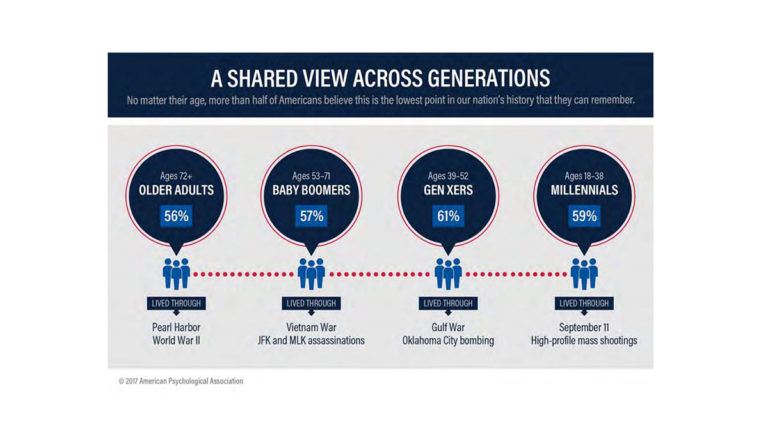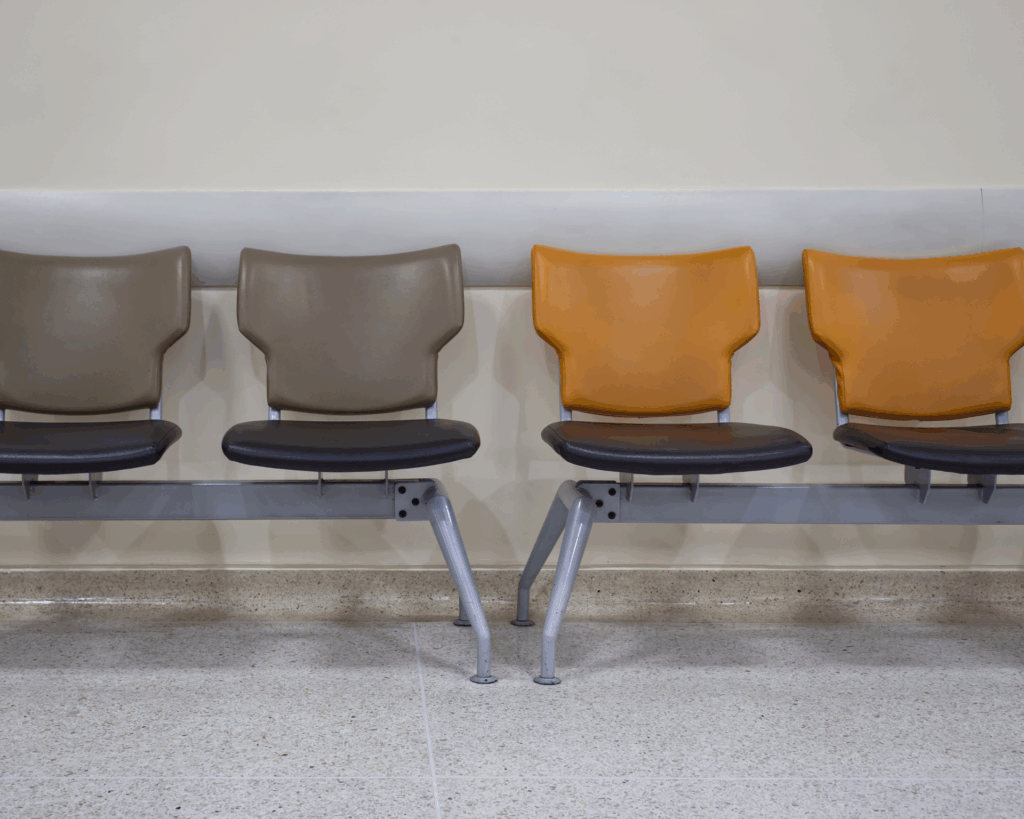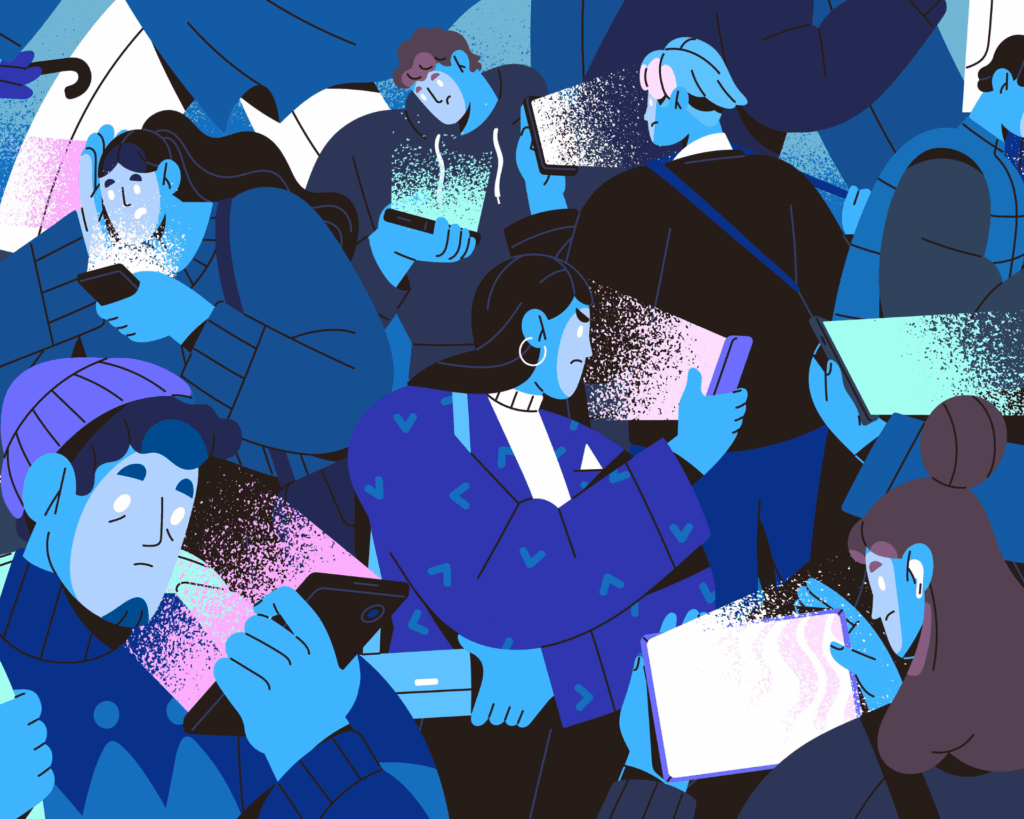The Stress of the Nation
Regardless of age, a majority of Americans surveyed feel that this is the lowest point in the nation's history. Worries about the future are the biggest source of stress.

Read Time: 2 minutes
Published:
Every day, countless stressors invade American brains. From the commute to work to the nightly news, our lives are inundated with overstimulation and worry. In between every funny animal video or odd but impressive human feat lies, perhaps even more frequently, an explainer of the next most imminent disaster.
This past summer, the American Psychological Association measured various factors that contribute to our collective anxiety with its annual Stress in America™ survey. The report was released on November 1, 2017 and reveals just how worried we are.
Regardless of age, the majority of people surveyed (59%) feel that this is the lowest point in the nation’s history. This includes Americans who lived through World War II and the Vietnam War and who witnessed incidents like the Oklahoma City bombing and September 11.
More people worry about the future of the United States than any other source of stress measured, including money, work, politics, violence, and crime. In addition, women are more stressed than men, and Millennials (ages 18-38) are more stressed than any other age group. And as illustrated in the graphic below, Black Americans reported the least optimism about the nation’s potential for improvement.

Photo provided courtesy of Madeline Bishop.
Americans were more likely to report that they are experiencing more evident symptoms of this stress, such as anxiety, anger, fatigue, and lying awake at night. However, many also reported their methods of stress management. Nearly three out of four people reported having someone to rely on in times of stress. Others manage stress by listening to music (47%), exercising or going for a walk (46%), praying (29%), and meditation or yoga (12%).

Databyte and photo via Stress in America: The State of Our Nation. American Psychological Association.



